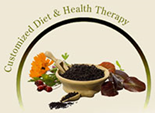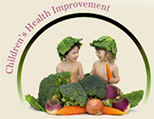





Feel Depressed? Check These 31 Tips
According to buzzfeed.com here are 31 simple ways to take care of yourself when you’re depressed.
Whether you’re dealing with depression and want to supplement your chosen treatment methods with self-care, or are just in a serious funk, here are some tips for making life feel a little more manageable.
- Grab a coloring book- adult coloring books can be therapeutic and perfect for your inner child.
- Make a “done” list instead of a “to-do” list-It may sound ridiculous, but buy looking at the “done” list at the end of your day of things you’ve accomplished you’ll have a much bigger account of that day instead of feeling worthlessness.
- Build a “make life a little easier” toolkit- Have a Happy Box that contains your favorites: Some funny movies, a quotes book, a nice smelling candle, and spa-like beauty products to calm you down. It also can have a journal, a favorite book, and some memories from happy times.
- Save kind words so you can look back over them later-Have a file or notebook of positive words/messages from your boss, co-worker, or customers handy for when you feel down you can go back and read through all the nice words people have said to you. This will lift you up instantly.
- 5. Let yourself cry- Crying is a natural relief. It helps to get out of that has built up and let go. It’s OK to cry. Never be ashamed of crying.
- 6. Make a gratitude list-Write down everything you’re thankful for, from big (like having a roof over your head) to small (like your Netflix account). “Reminding yourself of what you have leads to appreciation that helps you feel measurably more content,”- clinical psychologist Andrea Bonior, Ph.D.
- Volunteer at an animal shelter, play with friends’ pets, foster or adopt your own, if you can.
- Maintain a regular sleep schedule-When you get too little or too much sleep, you want to be inactive, your thoughts get muddy and unclear, and depression will feel that much worse, clinical psychologist Jennifer Taitz, Psy.D., tells BuzzFeed Life: Commit to sticking to a regular sleep schedule by setting a bedtime and wake time—and don’t hit the snooze button.
- Get ready for the day even if you plan on staying inside- Be prepared for that day like you’re going to go out. Take a super long hot shower, brush your hair, do your makeup (if you wear any), and put on your comfiest clothing that you feel good in.
- Be social, even if it means just showing up- “You don’t even have to participate in the conversation if you don’t want to. Get together with a group of friends who you love and who love you, and just exist with them. Listen in on conversations. The thoughts, laughs, topics, and shenanigans may help keep your mind off of things just for a little while. Sometimes that little while is enough to pull you out of a dark night.
- Don’t listen to sad music even if you want to- Create a happy playlist instead. Research shows that music has the power to induce a mood, so prepare a few uplifting playlists ahead of time.
- Make your bed every day-It takes two minutes. It makes your space feel more put together, gives you a quick sense of accomplishment. And once it’s done, you’re much less likely to crawl back in and waste the day away.
- Cuddle up watching your favorite TV show- It can be as a reward for productivity, a way to wind down at the end of the day, or as a social activity with friends.
- Decorate your space so you actually like being there- A lot of times when people are depressed their apartment looks depressing. Take good care of your living environment—clean it, decorate it to reflect your tastes. Make it a place you want to exist in, not disappear from.
- Try to find healthy food to eat- Comfort food is delicious and great in moderation, but when people are depressed, they sometimes eat more than they mean. Then next thing you know, you feel like crap, physically and mentally. “It’s a cycle: you feel down, so you eat. Then you gain weight, then you don’t want to go out.” Eating healthy foods will at least make you feel healthier physically even when you’re emotionally a wreck. If you don’t know where to start when it comes to eating healthy, then ask me for help.
- Make a list of things to do when you’re feeling overwhelmed with the world-Things that make you feel better, happy and calm. Put that list is a small box or in the side table drawer. When you feel down and the world is closing in get the list out pick one activity and do it.
- Pick up a hobby that has room for improvement- That means finding activities that won’t just give you pleasure, like watching TV, but will also give you a sense of accomplishment. It could be anything from painting to learning guitar to running more miles to finishing a book—anything that you can get better with over time.
- Write down your negative thoughts- Getting bad thoughts out of your head onto paper separates them from you. Keep it simple, though: Write down a thought and move on. If you go on for pages and pages, it’s not going to help.
- Get out on the open road-Get into your car and drive listening to your favorite playlist.
- Spend time in the kitchen- Cooking really help when you’re having a particularly bad day. There’s something zen about the process that soothes the soul and occupies the mind.
- Put affirmation where you’ll see it- It can be placed on all your mirrors in your room. Try to change it every week or two. Usually, it’s something that moves you or has to do with something what you’re currently struggling. So, every time you do your makeup or hair take a moment to read it aloud and let it soak in.
- Cut unnecessary responsibilities out of your life-We go on autopilot and do rituals without asking ourselves what really matters—and then wind up overwhelmed with trying to fit everything in. Which emails can go without an instant reply? What stuff can you delegate to a coworker or a partner? You don’t have to do it all. If you don’t know where to start trimming, get a few goals each week and cut things that aren’t necessary to those goals.
- Go outside-Even if it’s just for a brisk walk (which will get endorphins pumping, by the way), enjoying nature has many benefits. Daylight boosts mood, helps regulate sleep/wake patterns, and nature helps calm our thoughts and get rid of distractions.
- Plan your week so you don’t make decisions based on your mood-To keep yourself of falling into a cycle of “I’ll do it tomorrow” while you spend your days in bed, plan your week in advance to make sticking to day-to-day life easier. You can also write down how you felt after doing each activity so you can remind yourself in the future that getting out into the world makes you feel better, even when you don’t want to at first.
- Find an exercise that you actually enjoy- Workout and exercise classes help; it’s a winner. Choose what fits you best and enjoyable to look forward to it every time. For an hour you’ll get lost in the music, leave with a huge smile on your face and an endorphin high. Try to make yourself go even when you don’t feel like it. It’ll never fail you but it’ll lift your mood up.
- Look over your long term goals-Looking forward to things can be hard when you have depression. It’s helpful to have a big list of everything you want to do on hand to look at when things get tough. They could be concerts you want to go to or places you want to travel; whatever helps you look forward.
- Pamper yourself-When you’re dealing with depression. It’s easy to think that you don’t deserve to be treated with kindness—which is exactly why going out of your way to pamper yourself is an important part of self-care. Go all out with the spa treatment. Light candles, take a bubble bath, get a massage, and pour a glass of wine…whatever it takes to get yourself to relax as much as you can.
- Disappear into a book- Reading makes you feel better because you can escape as well as feel like you’ve accomplished something once you finish. It’s a great feeling because sometimes you get stuck; feel like you can’t move or do anything, which then will make you feel guilty. So if you just take it easy and read, you’ll feel better.
- Volunteer for a cause you really care about-There’s something about realizing how much you can contribute to the world that’s therapeutic and transformative.
- Meditate- Meditation is huge; it helps you take your focus away from your pain and sadness and redirects it to things that make you feel happy. While meditating, count all the things you’re grateful for. Be grateful for the larger things, be grateful for the smallest things, and be grateful for any little thing you can think of.
- Don’t rely on yourself to get better-These suggestions are a great way to make your depression feel a little lighter. But you should never be afraid to seek help or treatment, whether in the form of talking to someone, taking medication, or another method. It’s not all on you.
To learn more about depression, check out the resources at the National Institute of Mental Health here @ https://www.imalive.org
And there is the National Suicide Prevention Lifeline, which you can reach at 1-800-273-8255.
Ease Stress Fast, Relax, and Energyze
We live a stressful lifestyle 24/7 and more often we end up feeling burnout. It’s know that working out can reduce stress- a good idea- however, it’s not in this case where the body is exhausted already. By doing this you’ll be adding extra stress onto yourself taxing your adrenals glands end up feeling energy depleted.
A glass of wine-hopefully is pesticides free- can help. Listening to your favorite music or meditation/prayer can be a good answer too. But, what if you can relax and recharge in the same time?
Here’s a simple solution that brings you relief in seconds, aromatherapy.
A precious bottle of carefully selected essential oil would do it. Use any methods listed below that suits best and feel your stress begin to melt away:
– Put a few drops in a diffuser or, in a pinch, onto a cotton ball
– Sniff it right out of the bottle
– Blend it into a massage oil and massage the back of your neck, ears and feet (the bottom)
– Pritz it around your room like a natural air freshener
Click on any blend- found on Amazon- very affordable and try it out for yourself:
- Stress Relief Synergy Blend, with bergamot, patchouli, blood orange, ylang ylang and grapefruit
- Relaxation Synergy Blend, with lavender, marjoram, patchouli, mandarin, geranium and chamomile
- Anxiety Ease Synergy Blend, with lemongrass, sweet orange and ylang ylang
Adapted from The Healthy Back Institute
On the light of stress relief topic I’d like to share with you a powerful lesson I received from ‘Our Daily Bread’, a daily email devotion.
“”Our valley in Idaho can be very cold in the winter. Clouds and fog roll in and blanket the ground, trapping frigid air under warmer layers above. But you can get above the valley. There’s a road nearby that winds up the flank of Shafer Butte, a 7,500-foot mountain that rises out of our valley. A few minutes of driving and you break out of the fog and emerge into the warmth and brilliance of a sunlit day. You can look down on the clouds that shroud the valley below and see it from a different point of view”.
Life is like that at times. Circumstances seem to surround us with a fog that sunlight cannot penetrate. Yet faith is the way we get above the valley—the means by which we “set [our] hearts on things above” (Col. 3:1). As we do, the Lord enables us to rise above our circumstances and find courage and calmness for the day. As the apostle Paul wrote, “I have learned to be content whatever the circumstances” (Phil. 4:11).
We can climb out of our misery and gloom. We can sit for a time on the mountainside and through Christ who gives us strength (v. 13) we can gain a different perspective. —David Roper
Although I can’t always see You or what You’re doing, Lord, I rest in Your love for me.
Faith can lift you above your fears.”
Cacao Vs. Cocoa
The Difference Between Cocoa And Cacao
Cacao is raw cacao made by cold-pressing unroasted cocoa beans. The process keeps the living enzymes in the cocoa and removes the fat (cacao butter). So, cacao is simply pure, raw cacao beans requires minimal processing and preserves all the antioxidants and other beneficial phytonutrients.
Cocoa looks the same but it’s not. Cocoa is processed cacao beans that has been processed and roasted at high temperature.
Even the top quality cocoa brands, such as Rapunzel 100% Pure Organic Cocoa Powder – while being an excellent product, are roasted.
Studies show that the darker chocolate is the better choice (contains higher percent of cacao). 70% + percentage of cacao in dark chocolate has a higher concentration of antioxidants than milk chocolate. Keep in mind that milk chocolate is also higher in added sugar and unhealthy fats. Not to mention the inhibition of antioxidant absorption from cacao when adding dairy to chocolate.
Do you know?
Cacao contains far more antioxidants per 100g than acai, goji berries and blueberries.
Cacao is rich in minerals like magnesium, iron, potassium, calcium, zinc, copper and manganese.
Cacao can increase levels of certain neurotransmitters that promote a sense of well-being. It is the same brain chemical (phenylethylamine) that is released when we experience deep feelings of love.
Also, of the many flavonoids in cacao, two in particular, epicatechin and quercetin, are believed to be responsible for the cancer-fighting properties. Eating real chocolate can help keeping cancer cells under check!
The easiest way to tell whether you are getting cacao or cocoa? Look for the word RAW on the packaging! And then check the rest of the ingredients.
Inspirational Quotes for 2016
Be powerful but remember time is more powerful than you
Stop waiting for things to happen go out and make them happen
Wake up with determination
Be the best version of you
Be successful:
Accept responsibility
Set goals
Look for opportunities to grow
Be grateful
Welcome change
Forgive others
Complement others
Give credit when credit is due
Wish success to others
Always appreciate and be thankful of what you have. There are a lot of people out there who wish they had what you have.
When you feel stressed out remember that you’re never giving anything in this world that you can’t handle
Be strong, be flexible, and love yourself and others
And always remember to let go and keep moving forward
Sometimes bad things happen in our lives put us directly on the path to the best things that will ever happen to us
Every problem comes to us should make us not brake us
Every test in our life should make us better not bitter
The choice is ours to become victors but not victims
Happy & Healthy 2016!
Mammograms Cause Breast Cancer!!!
Is this a fact or myth?
You’ve the right to know, learn and make a conscious decision. This is your health, you and your future. No longer feeling confused and lost. Discover more here!
Canola Oil: Good or Bad for You!
Holidays are around the corner, and, you’ll be using and consuming a quite good amount of vegetable oils. Are you getting the good healthy or the bad ones?
Have you been lied to about the health benefits of canola oil?
Many people believe that canola oil is a good healthy vegetable oil choice. But, the truth is the mainstream media has been influenced by heavy handed marketing tactics by big food companies.
Canola oil is cheap for them to produce so they want to fool the media into thinking it’s a “health oil” so that people, restaurants (use it heavily), etc will buy it up as their main oil of choice.
The dirty truth about canola oil
Canola oil is anything but “healthy”.
Canola oil is made from something called rapeseed. Rapeseed actually had to be bred over the years to reduce the percentage of a problematic component of rapeseed, which is erucic acid.
The REAL issues with canola oil:
Canola oil typically ranges between 55-65% monounsaturated fat and between 28-35% polyunsaturated fat, with just a small amount of saturated fat.
While we’ve been led to believe that high monounsaturated fat oils are good for us (which they’re in the case of virgin olive oil, avocados or from unprocessed nuts or seeds), the fact is that canola oil has more detriments than it does benefits.
The biggest problem with most popular vegetable 0ils are highly processed and refined vegetable oils such as corn oil, soybean oil, and yes, even canola oil, is that the polyunsaturated component of the oil is highly unstable under heat, light, solvents, and pressure, and this heavily oxidizes the polyunsaturates which increases free radicals in your body.
The end result of all of this refining and processing are oils that are highly inflammatory (inflammation is today modern life ‘silent killer’) in your body when you ingest them, damaging your cell membranes, contributing to heart disease, weight gain, and other degenerative diseases.
The reason that extra virgin olive oil (EVOO) is good for you is that it is generally cold pressed without the use of heat and solvents to aid extraction, and also contains much less polyunsaturated fats than canola oil, so is therefore more stable. EVOO also contains important antioxidants that help protect the stability of the oil.
Canola oil, on the other hand, is typically extracted and refined using high heat, pressure, and petroleum solvents such as hexane. Most canola oil undergoes a process of caustic refining, degumming, bleaching, and deoderization, all using high heat and questionable chemicals.
Does canola oil even have trans fats?
Even worse, all of this high heat, high pressure processing with solvents actually forces some of the omega-3 content of canola oil to be transformed into trans fats.
According to Dr. Mary Enig, PhD, and Nutritional Biochemist, “Although the Canadian government lists the trans fat content of canola at a minimal 0.2 percent, research at the University of Florida at Gainesville, found trans fat levels as high as 4.6 percent in commercial liquid canola oil“.
And this is the crap that they are marketing to you as a “healthy oil”!
As you can see from the details above on how canola oil is processed, it is barely any healthier for you than other junk vegetable oils like soybean oil or corn oil. The bottom line is that it is an inflammatory oil in your body and should be avoided as much as possible.
Alternative, best and truly healthy oil choices:
- Extra virgin olive oil – for lower temperature cooking and salad dressing
- Virgin coconut oil – great for all temperatures of cooking due to its super high stability under heat. A great source of healthy saturated fats in the form of medium chain triglycerides (MCTs), one of which is Lauric Acid, which helps support the immune system and is lacking in most western diets.
- Organic grass-fed butter – Grass-fed butter is a great source of the healthy fat, CLA, which has even been shown in studies to have muscle building and fat burning properties, along with anti-cancer properties. Grass-fed butter also has a much healthier omega-6 to omega-3 ratio than standard butter at your grocery store. Kerrygold Irish butter is my favorite grass-fed butter, and Organic Valley pasture-raised butter is my 2nd favorite!
- Macadamia nut oil & avocado oil – Both of these oils have a high ratio of monounsaturated fat making them moderately stable for use with heat.
These are much healthier oils than canola or other vegetable oils. Now, you know to NOT be fooled by food labels claiming that they contain “healthy canola oil”
HAPPY THANKSGIVING!
Source:
http://www.truthaboutabs.com/the-canola-oil-deception.html
Essential health benefits you desire are found in ONE FOOD only!
Some doctors are referring to this food product as the ‘New Anti-Aging Product of the Century’!
This food can:
√ Promote youthful skin, healthier hair, and stronger nails
√ Help keep bones healthy and strong
√ Support joint health
√ Regenerate cartilage
√ Build lean muscle
√ Contribute to a balanced diet and help maintain weight
√ Support healthy inflammation response due to over exercise
√ Improve sleep quality
Discover more here!
Cold/Flu Remedy
Cold/Flu season is around the corner. Are you ready?
Get equipped saving yourself aches and discomfort -not to mention losing work days- by being prepared keeping cold/flu away of your doorstep.
This remedy is to be made in advance; needs about a month to mature. It’s a valued tonic revered by herbalists for its ability to help prevent cold and flu symptoms and/or shorten their duration if they occur. Who doesn’t want that?
It’s an apple cider vinegar infusion that contains “powerful immune-boosting, anti-inflammatory, anti-bacterial, anti-viral, decongestant, and spicy circulatory movers” that make it “especially pleasant and easy to incorporate into your daily diet to help boost the immune system, stimulate digestion, and get you nice and warmed up on cold days.” It’s called Fire Cider
Ingredients
- ½ cup peeled and shredded/diced ginger root
- ½ cup peeled and shredded/diced horseradish root
- ½ cup peeled and diced turmeric OR 1/4 cup additional ginger and 1/4 cup additional horseradish
- ½ cup white onion, chopped
- ¼ cup minced or crushed garlic cloves
- 2 organic jalapeno peppers, chopped
- Zest and juice from 2 organic lemons
- Raw apple cider vinegar
- Raw, organic honey to taste
- Several sprigs of fresh rosemary or thyme (optional)
- ½ teaspoon black peppercorn (optional)
Equipment
- Quart-sized jar
- Wax paper
Instructions
Add the ginger, horseradish, onion, garlic, jalapeno and lemon juice/zest to a quart-sized jar. Pack them down lightly so that the jar is about 3/4 full. Use a fermenting weight to hold down the veggies/roots, or place heavy roots at the top so that they will weigh down the herbs and jalapenos (which float). Pour a generous amount apple cider vinegar over the roots/vegetables. You want everything to stay under the liquid to prevent spoilage. Keep in mind that some of the roots will expand a little so top it off well. If you’re using a metal lid, line it with wax paper so that the vinegar doesn’t corrode it, then put the lid on. Place in a dark, room temperature cabinet for 2-4 weeks. (A month is best). When the cider is ready, shake well and then strain the roots/veggies using a cheesecloth or fine mesh sieve. Add honey to taste and store in the fridge.
Usage
- Many people take 1-2 tablespoons throughout the fall/winter months as a preventative measure, or every three to four hours if symptoms are present. As a “wellness shot” put about 1 oz. in a shot glass to drink straight up
- As a tea – Breathe in the steam as you sip to relieve congestion
- In juice – For little ones, it’s best to serve a small amount mixed in freshly-pressed orange juice or lemonade
- As a marinade or salad dressing
Adapted from:
A Cool Recipe for Hot Summer Days!
 A tasty strawberry banana ice pops, perfect for the summer!
A tasty strawberry banana ice pops, perfect for the summer!
Here’s what you need:
Ingredients
1 heaping cup of strawberries
½ cup of yogurt (if you’re allergic to cow’s milk, use goat, sheep or coconut yogurt)
1 tablespoon of raw honey, maple syrup, or nothing
½ banana
Directions
Blend the strawberries and 1 tablespoon of sweetener (if using) in a blender or food processor.
In a small bowl, stir the yogurt with 1 tablespoon of the strawberry puree and 1 tablespoon of honey.
Fill ice pop molds with strawberry puree and yogurt (alternating to make layers) and slices of bananas and strawberries.
Insert sticks and freeze for 4 hours or until frozen. Run under hot water to release.
Easy to make, delicious and nutritious!
Is Plastic Use Safe?
Know Your Plastics
Plastics are everywhere – in food containers and toys, in cosmetics packaging and household utensils. While some plastics are eco-friendly and may be safe for kids, others contain harmful chemicals or cause dangerous pollution during manufacturing.
It’s just about impossible to avoid plastics altogether, but you can look for plastics that are safest for your family and the environment. So get to know the recycling codes imprinted on the underside of plastic products.
Look for these numbers before you buy:
- Safer choices are coded 1, 2, 4 and 5.
- Avoid 3, 6 and most plastics labeled 7.
Here’s what you should know about each code:
CODE 1: PET OR PETE (NYLON)
Qualities: Thin, clear
Common usage: Bottles for water, cooking oil, peanut butter, soda
Studies indicate that this plastic is safe for one-time use. As a precaution, however, these bottles should not be reused or heated. This plastic can be recycled once into new secondary products such as fabric, carpet or plastic lumber.
CODE 2: HDPE (HIGH-DENSITY POLYETHYLENE)
Qualities: Thick, opaque
Common usage: Milk and water jugs, juice bottles, containers for detergent, shampoo and motor oil, and toys
Limit how often you refill containers made of HDPE. It can be recycled one time into products similar to those made of recycled Code 1 plastic.
CODE 3: PVC (POLYVINYL CHLORIDE)
Qualities: May be rigid or flexible
Common usage: Bibs, mattress covers and commercial-grade plastic wrap, as well as a few types of food and detergent containers
Avoid it. The manufacture of PVC creates dioxin, a potent carcinogen that contaminates humans, animals and the environment. PVC may also contain phthalates to soften it. These hormone disrupting chemicals have been linked to male reproductive problems and birth defects. PVC is not easily recycled, but some recycling plants may accept it.
CODE 4: LDPE (LOW-DENSITY POLYETHYLENE)
Qualities: Soft, flexible
Common usage: Grocery store bags, plastic wrap for household use and garbage bags
LDPE is one of the safer plastics, but recycle it – and limit waste by bringing reusable bags when you’re shopping.
CODE 5: PP (POLYPROPYLENE)
Qualities: Hard but flexible
Common usage: Ice cream and yogurt containers, drinking straws, syrup bottles, salad bar containers and diapers
PP is one of the safer plastics, but be sure to recycle wherever possible.
CODE 6: PS (POLYSTYRENE)
Qualities: Rigid
Common usage: Styrofoam coffee cups and meat trays; opaque plastic spoons and forks
Avoid it. PS can leach styrene, a known neurotoxin with other harmful health effects.
CODE 7: OTHER (INCLUDING POLYCARBONATE, BIOPLASTIC AND ACRYLIC)
Code 7 is a grab bag. It includes polycarbonate, a plastic made from BPA, a harmful synthetic estrogen. Manufacturers use polycarbonate to make five-gallon water bottles, sports bottles, clear plastic cutlery or the lining of metal food cans. New plastic alternatives to polycarbonate, such as co-polyesters, are marked Code 7 as well.
This code also includes some new, compostable green plastics, such as those made from corn, potatoes, rice or tapioca. Bio-based plastics hold promise for reducing waste, but you must put them in regular trash or your city’s compost containers, not in standard recycling bins. Bio-based plastics cause huge problems if they enter the normal plastic recycling stream.
Investigate #7 and avoid polycarbonate. Don’t heat or reuse bio-plastics unless they are expressly designed for that.
Remember: Whatever plastics you choose, never heat them in the microwave or subject them to other extreme stresses, like being kept in a hot car. Always recycle or throw away containers once they start to crack or break down.
Adapted from:



